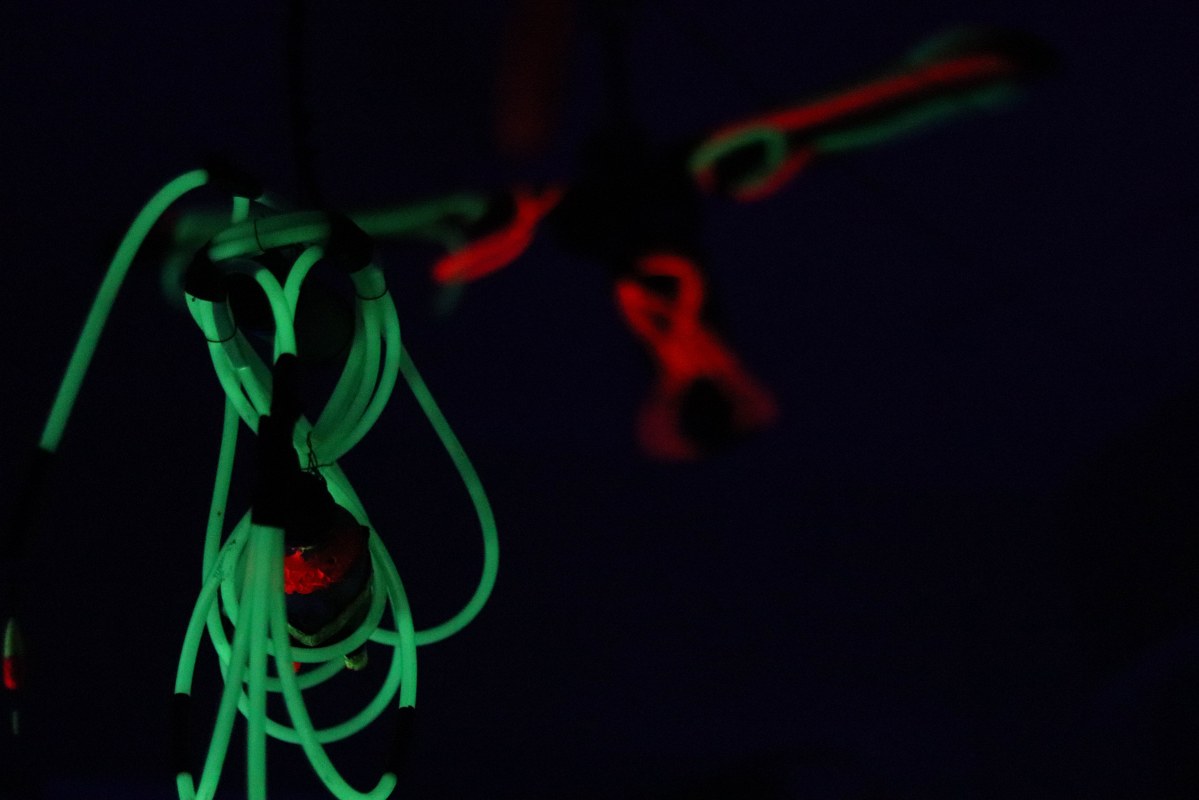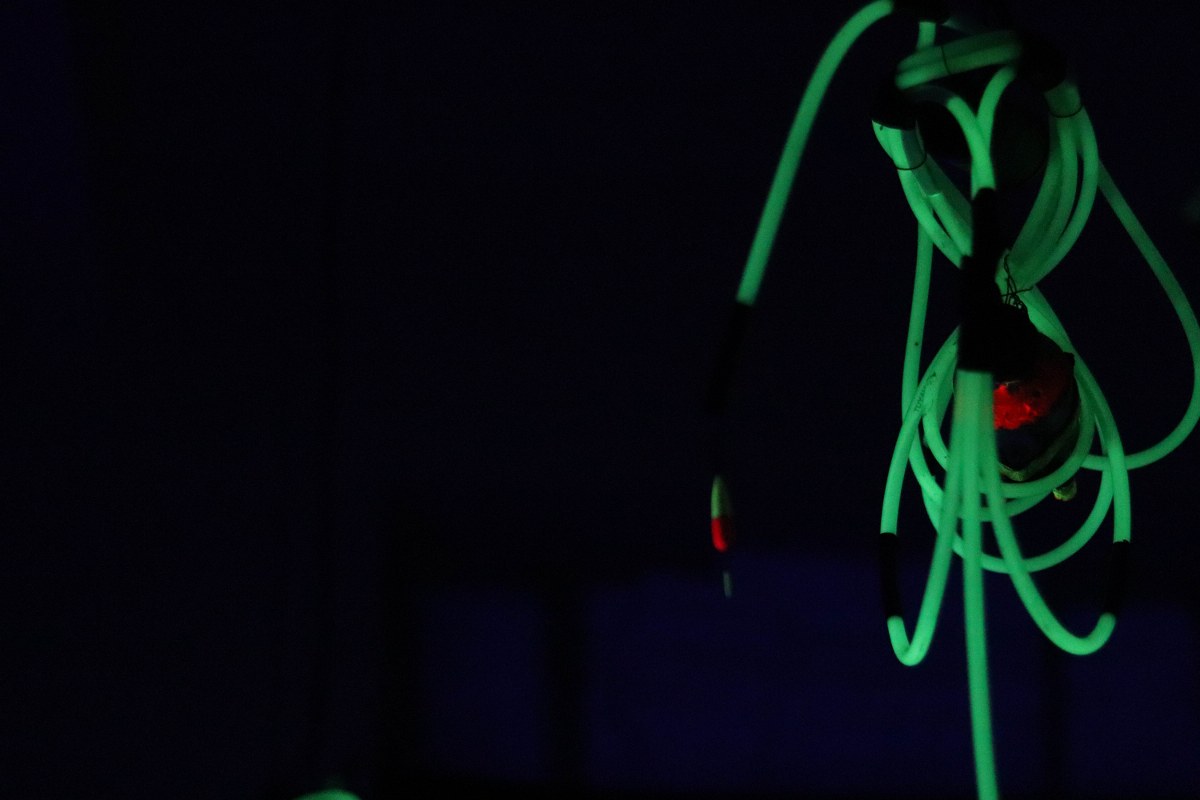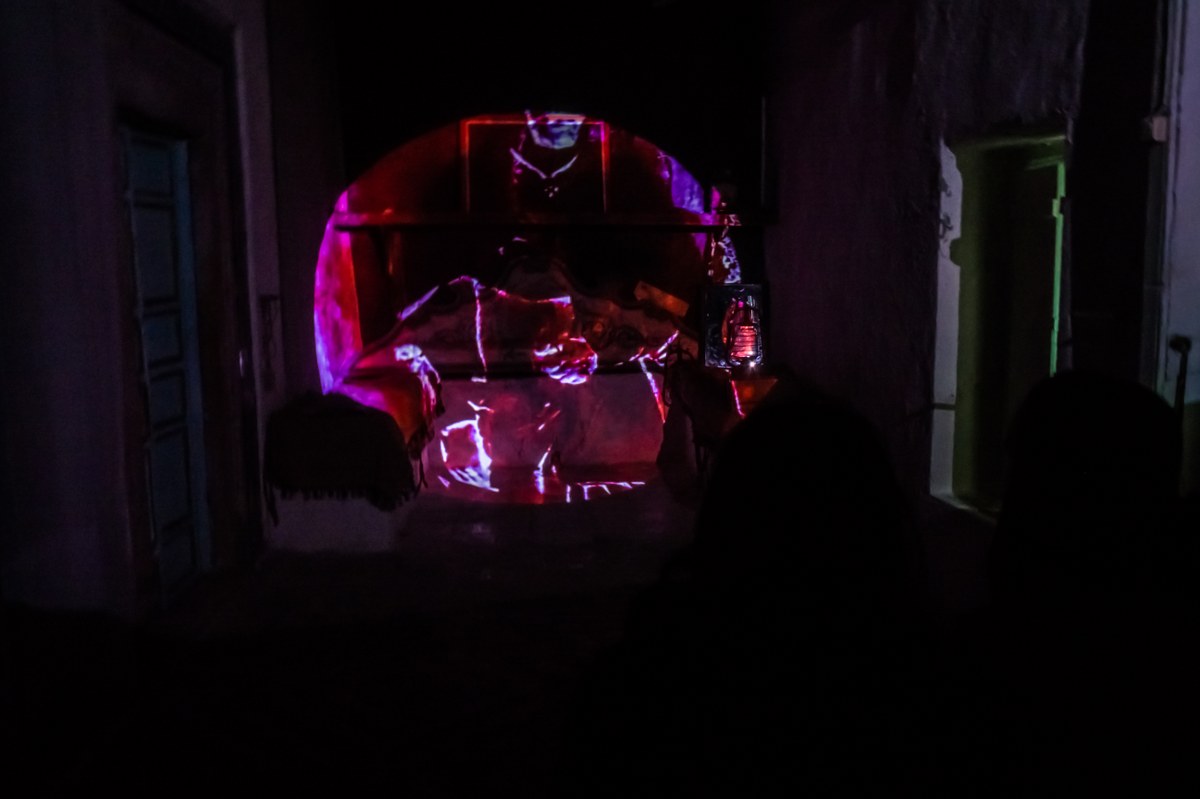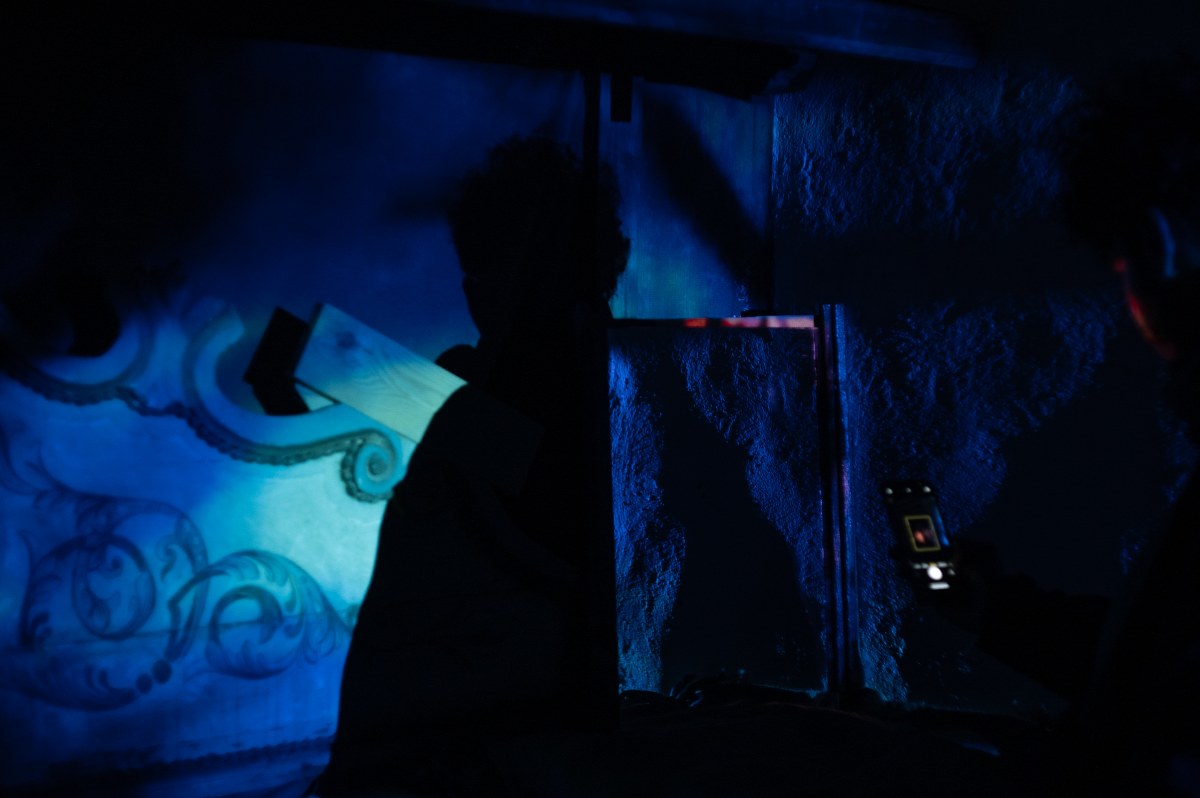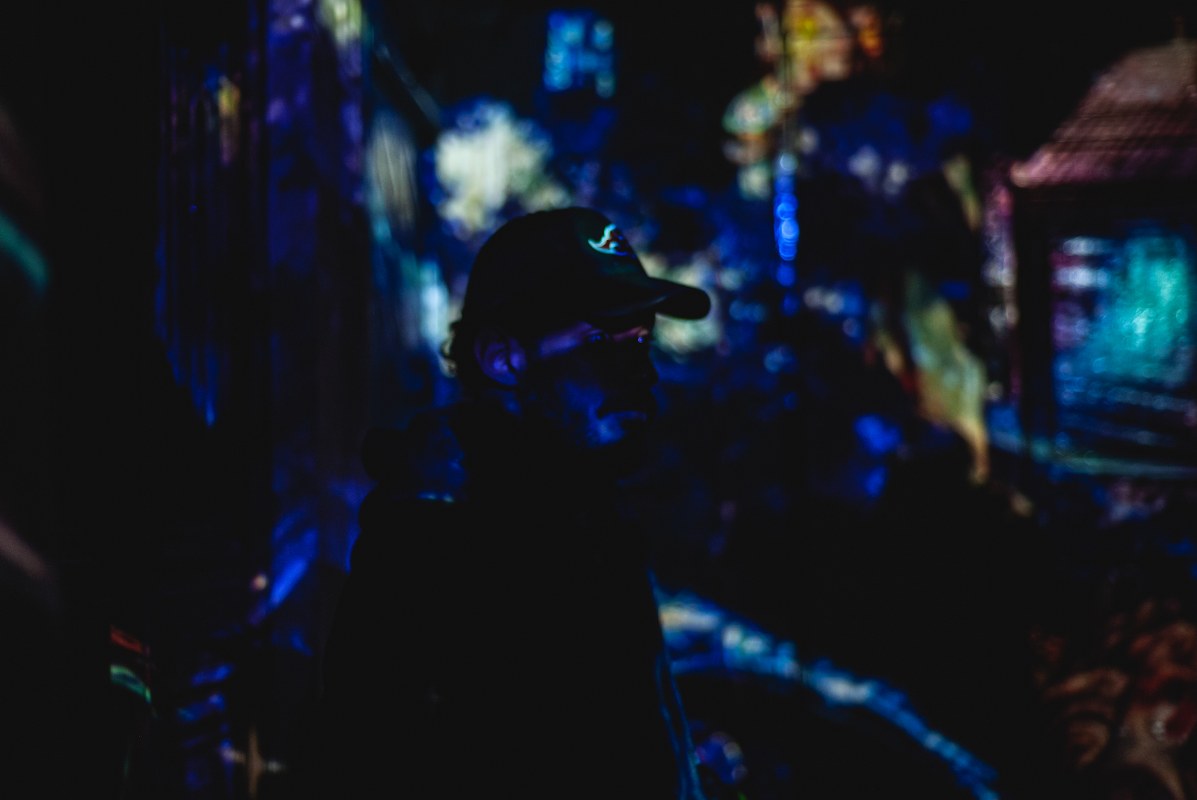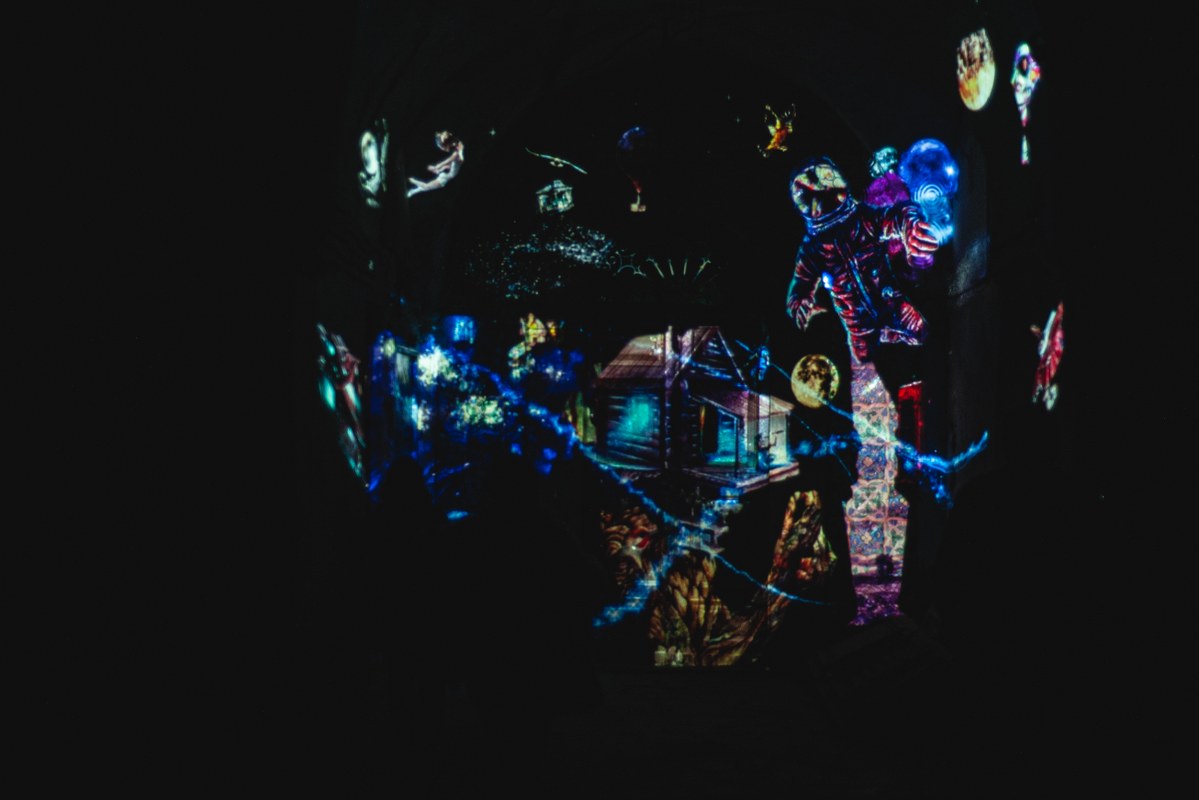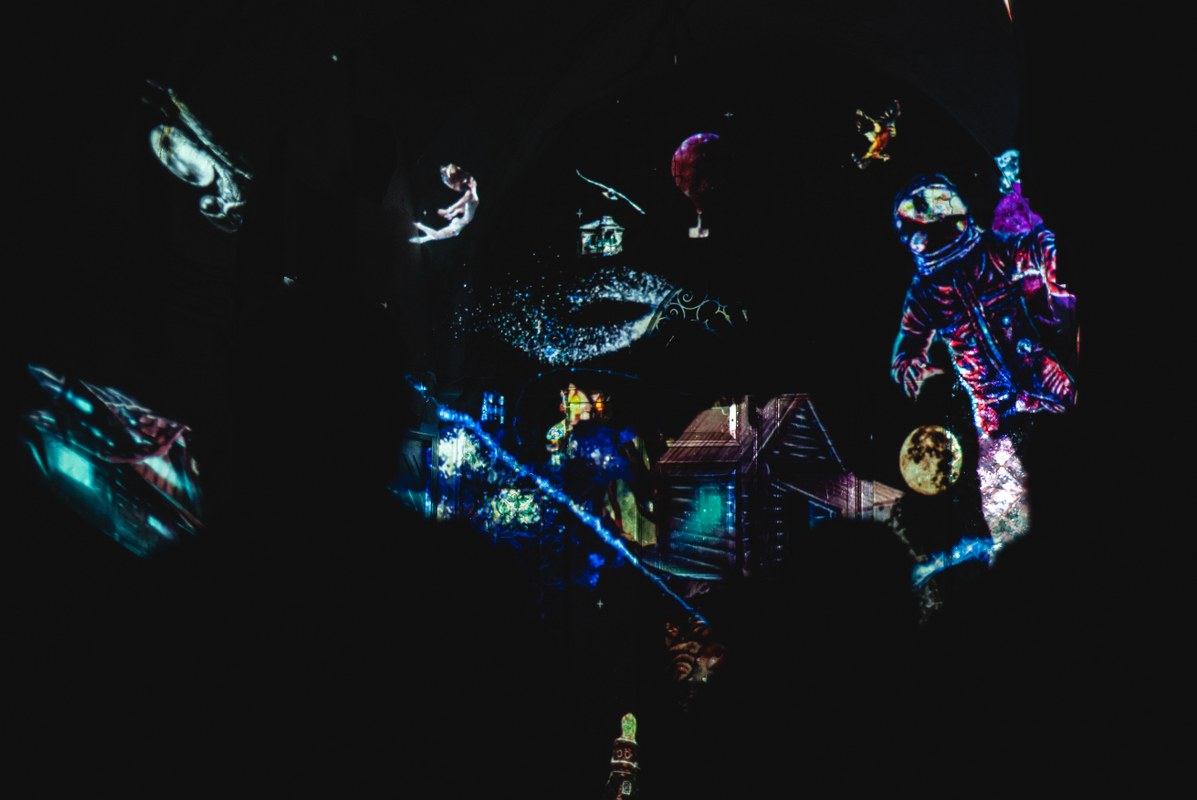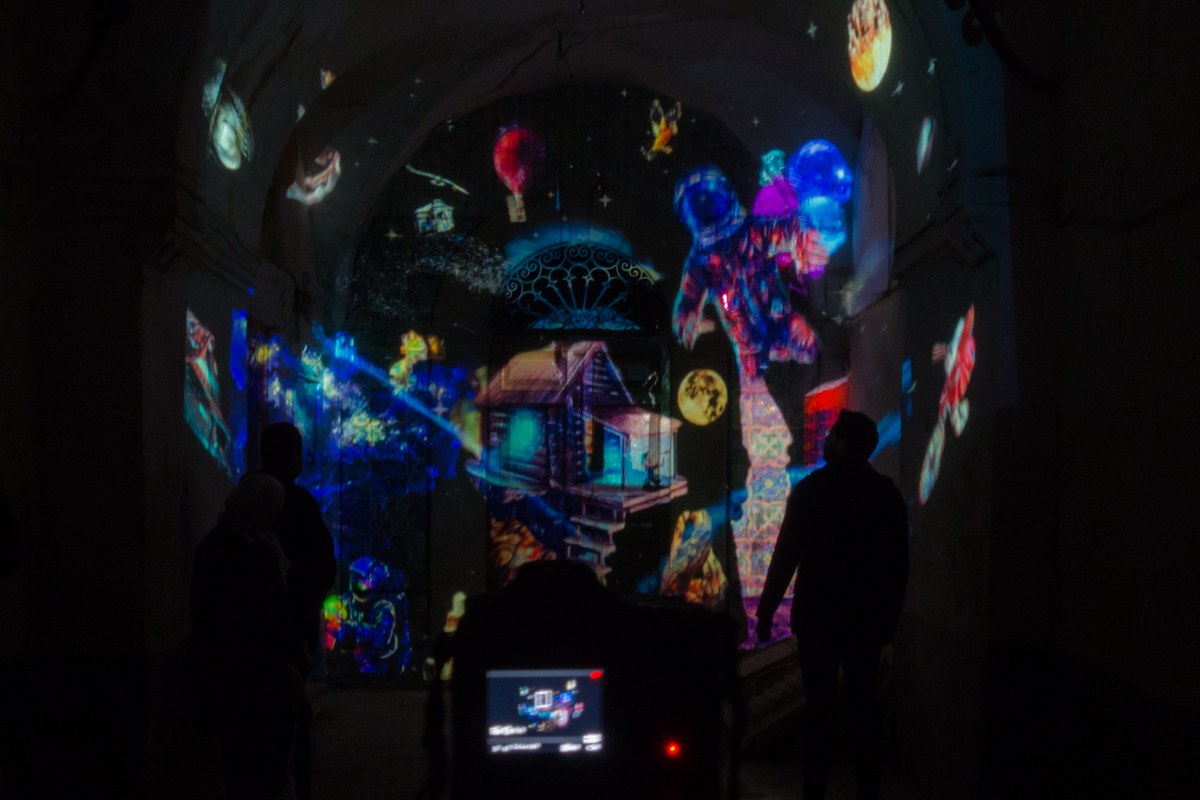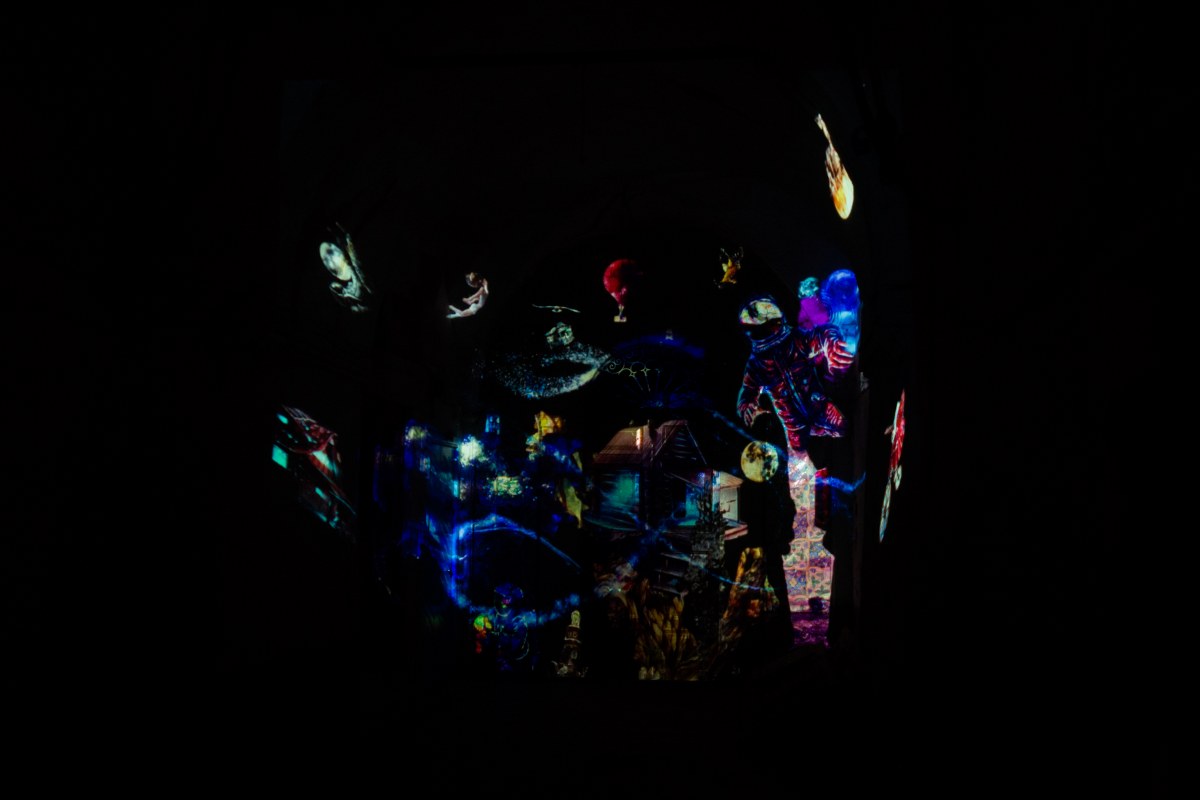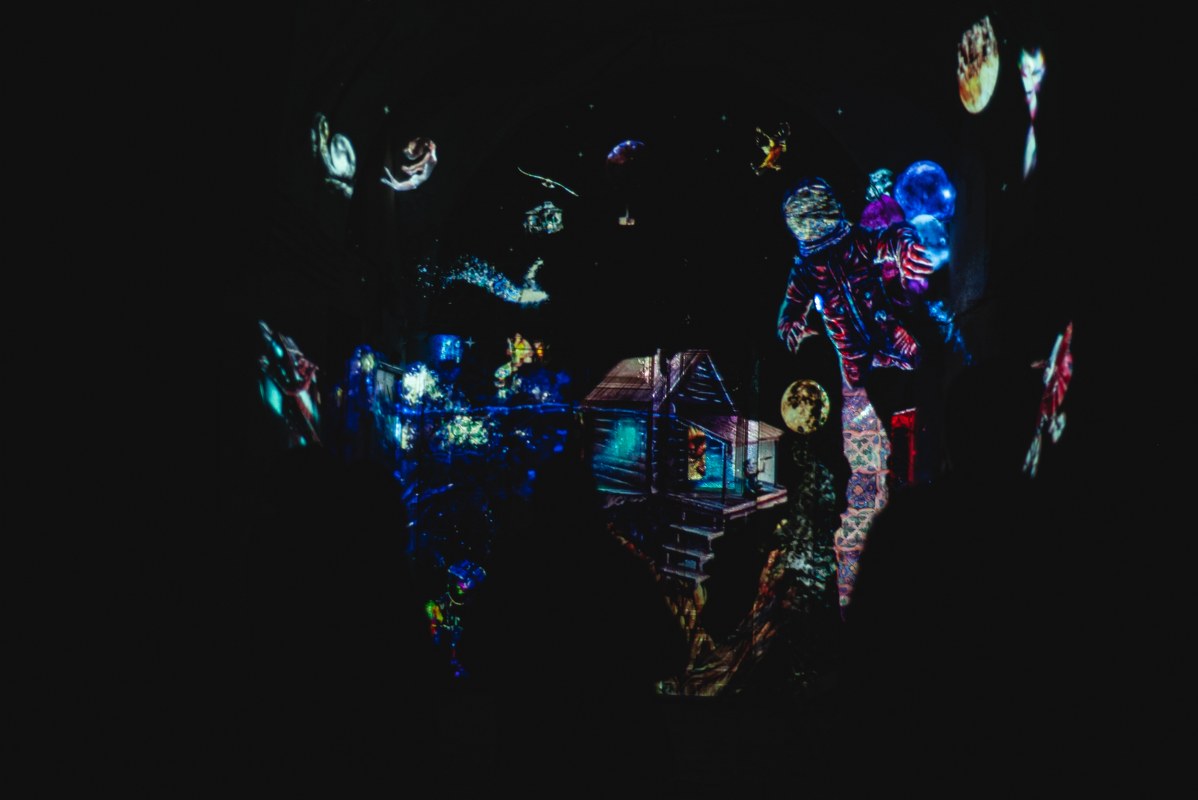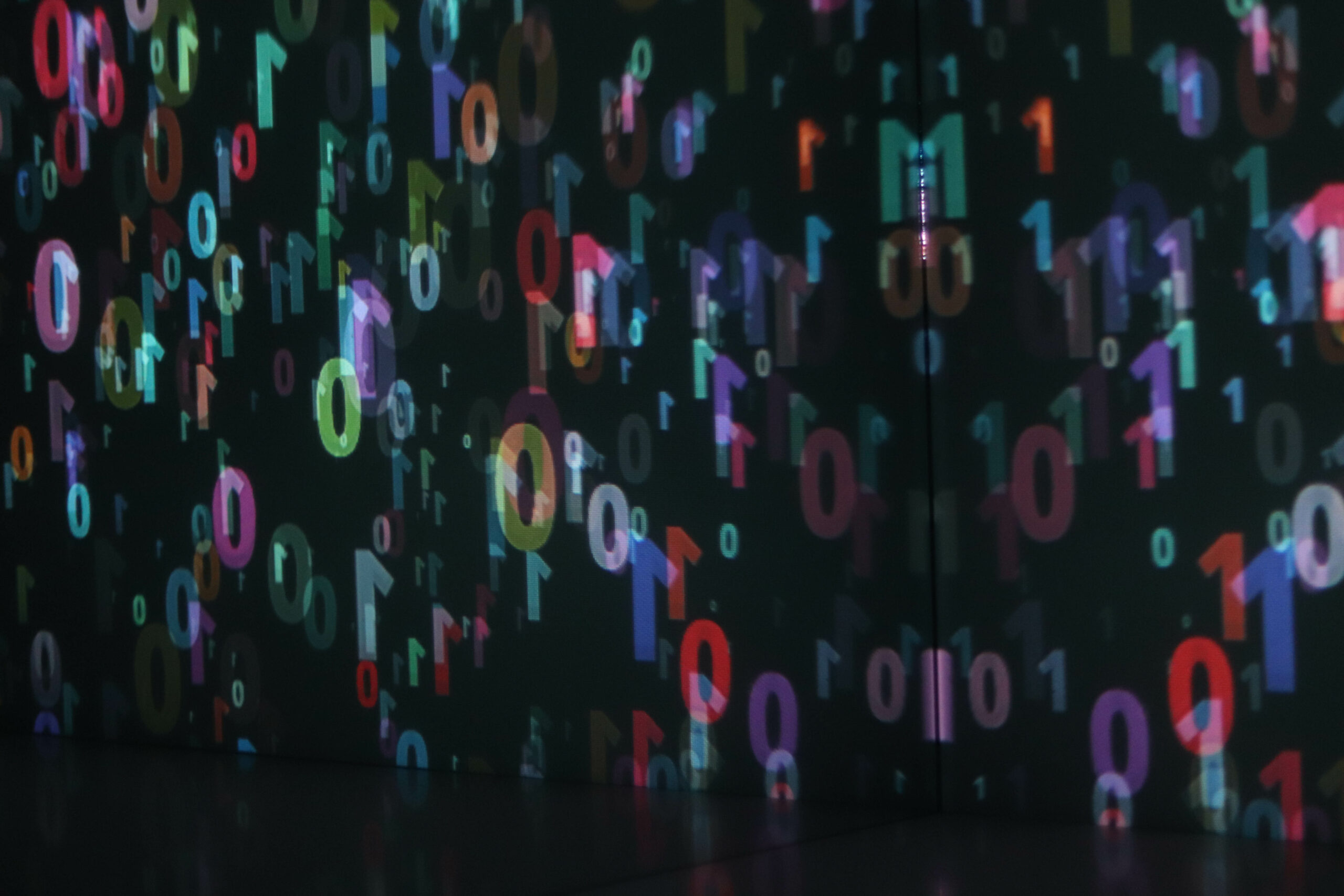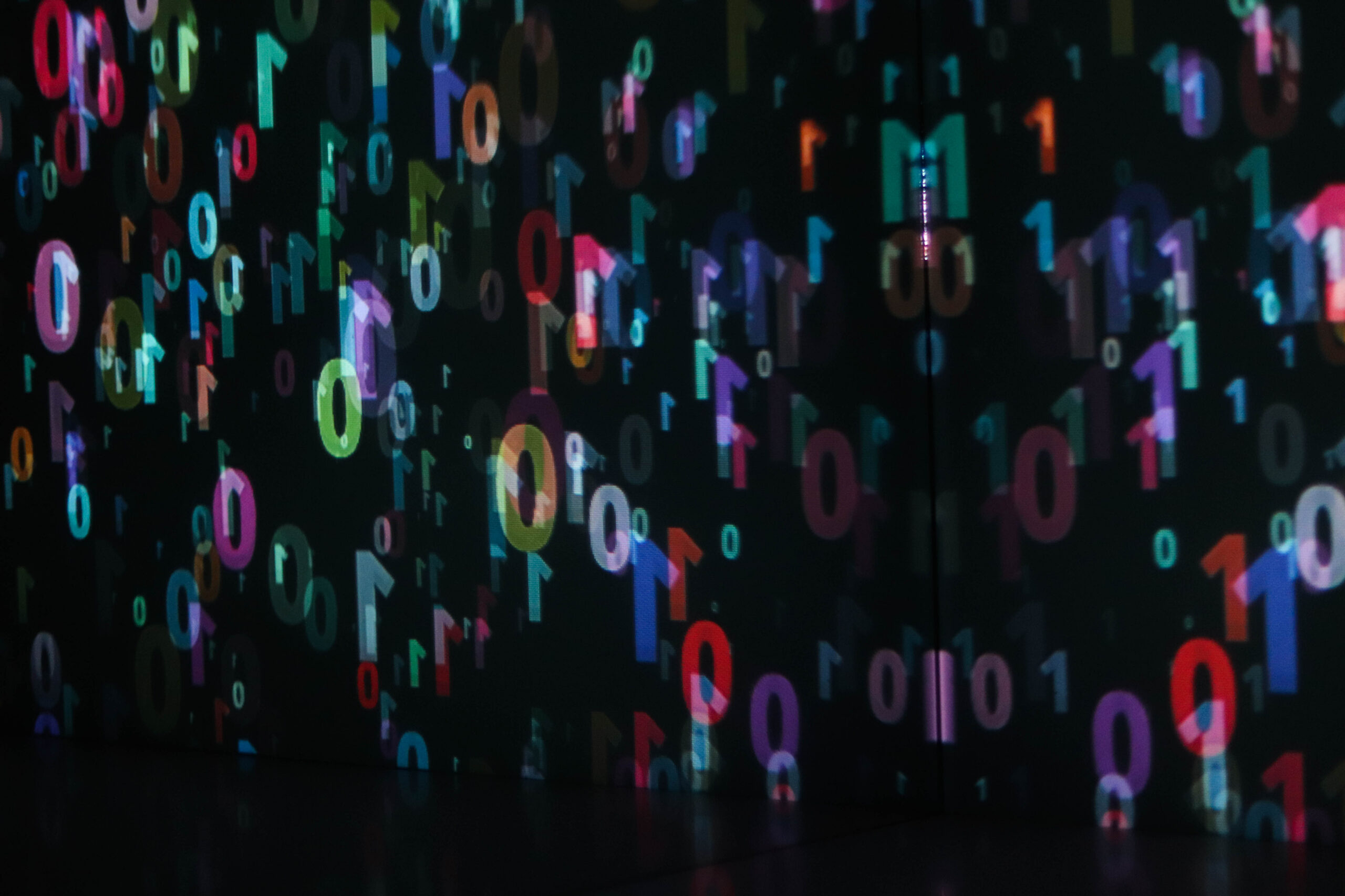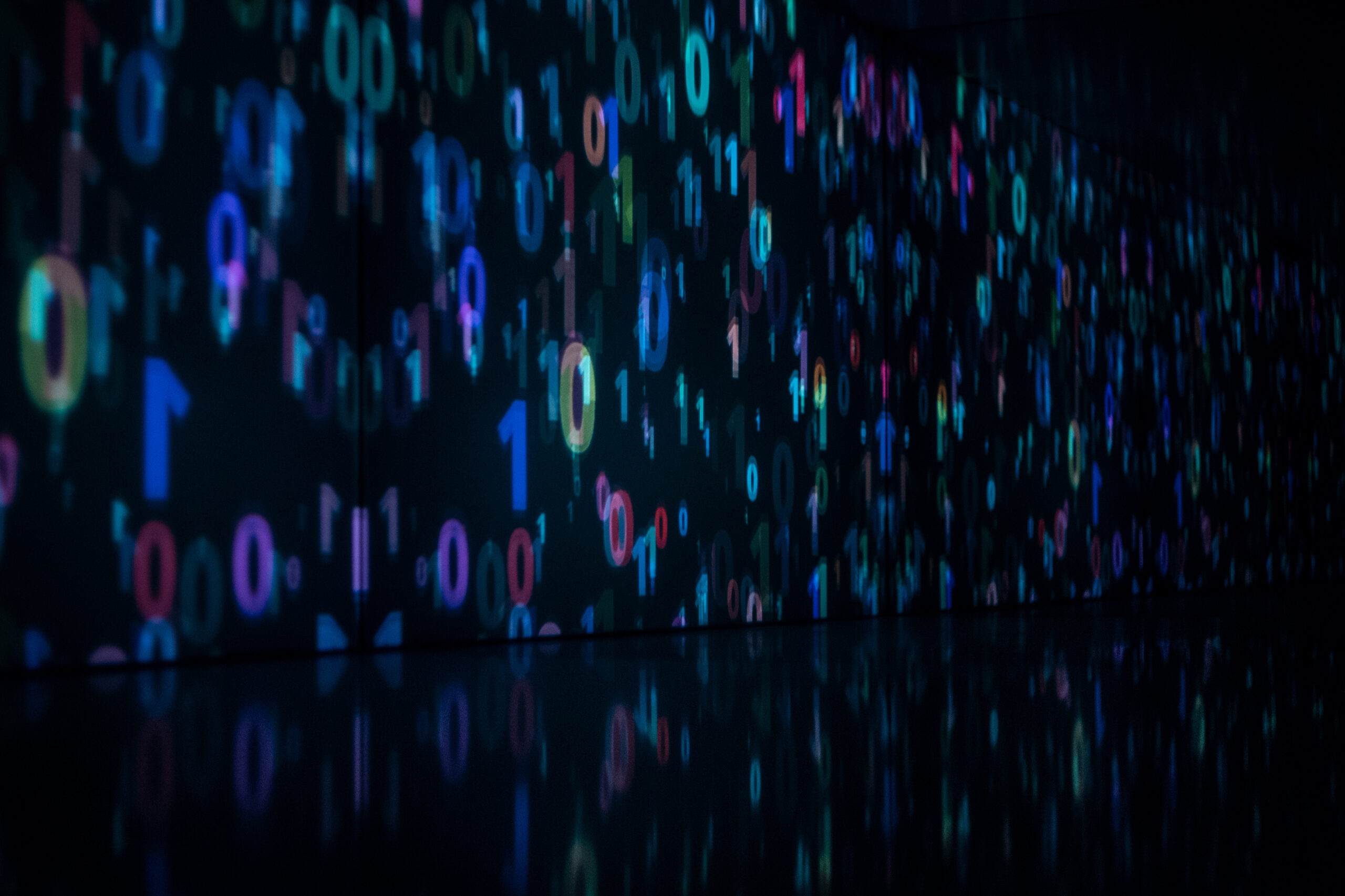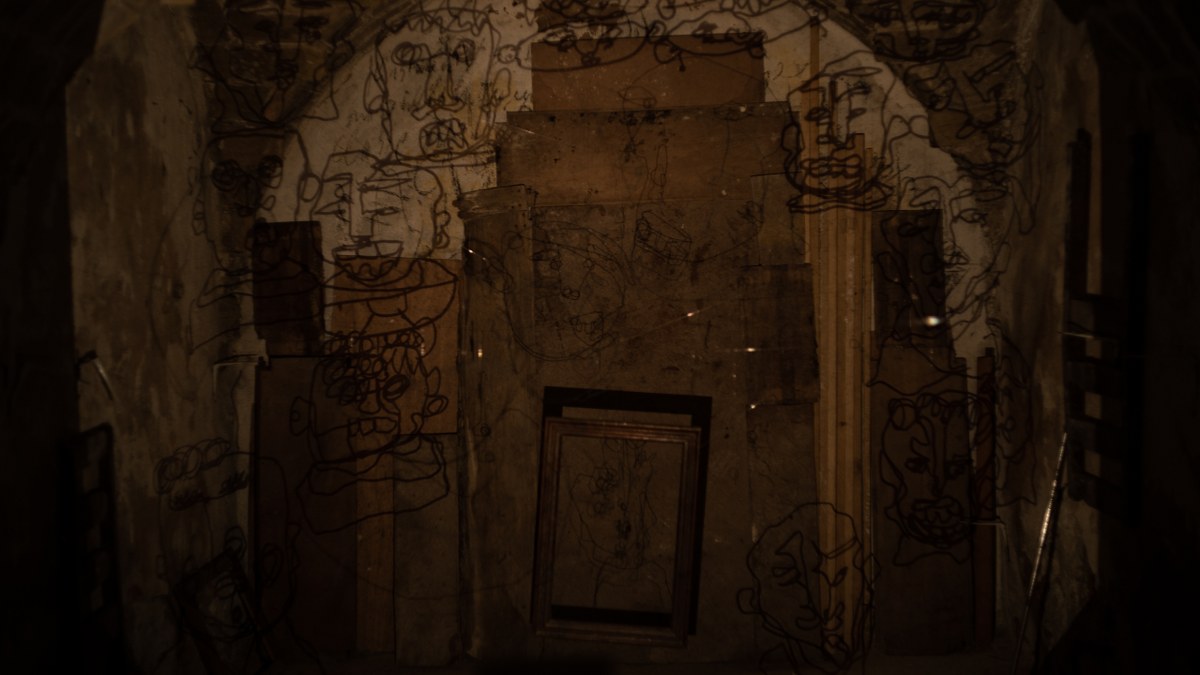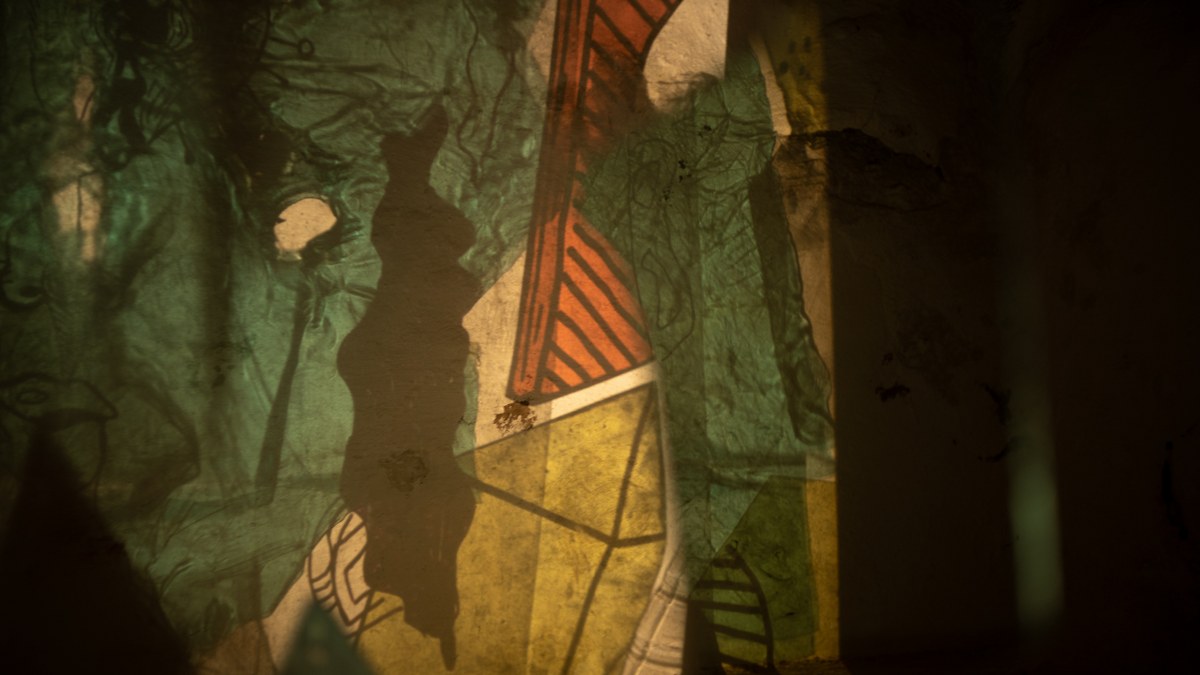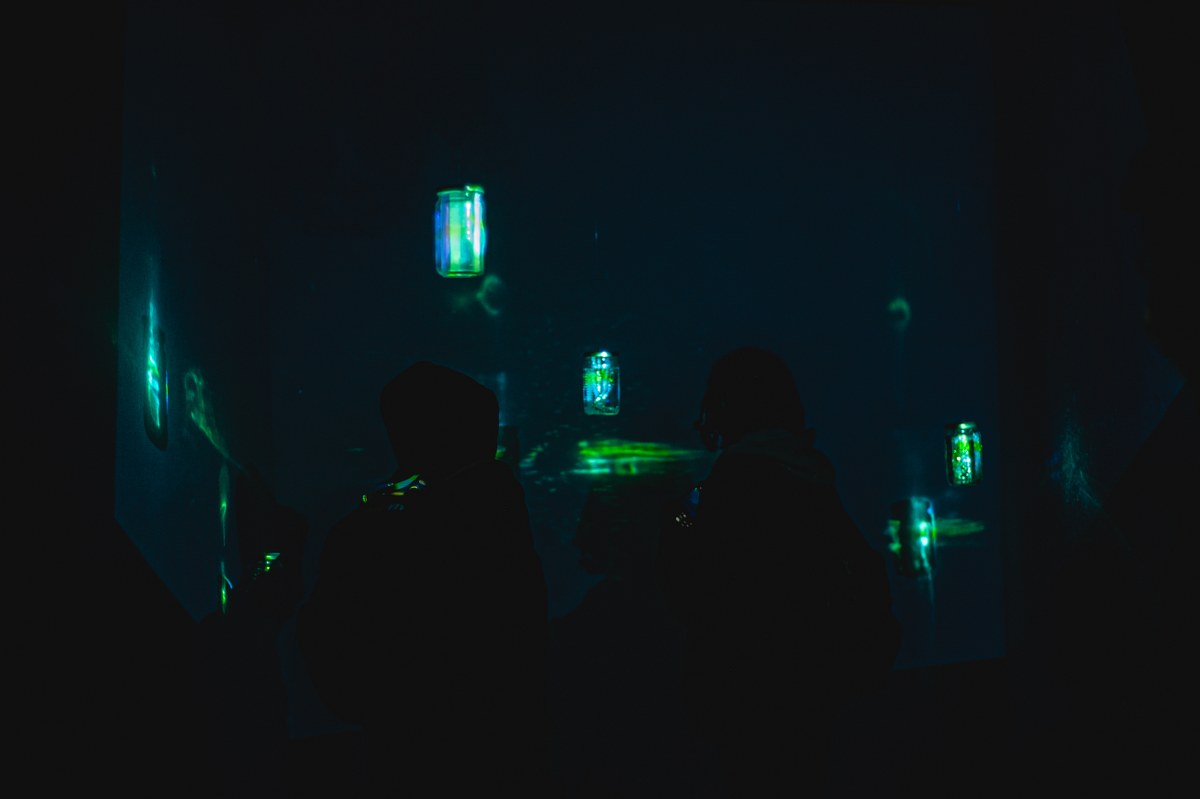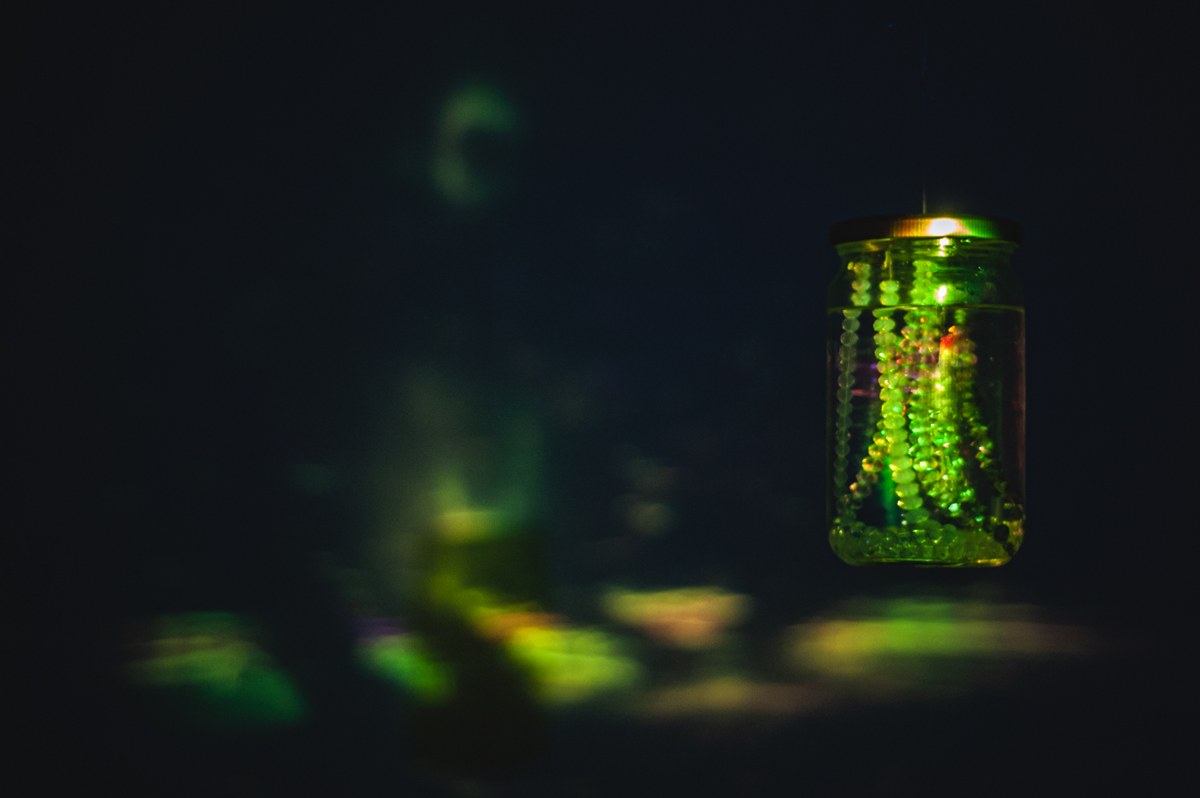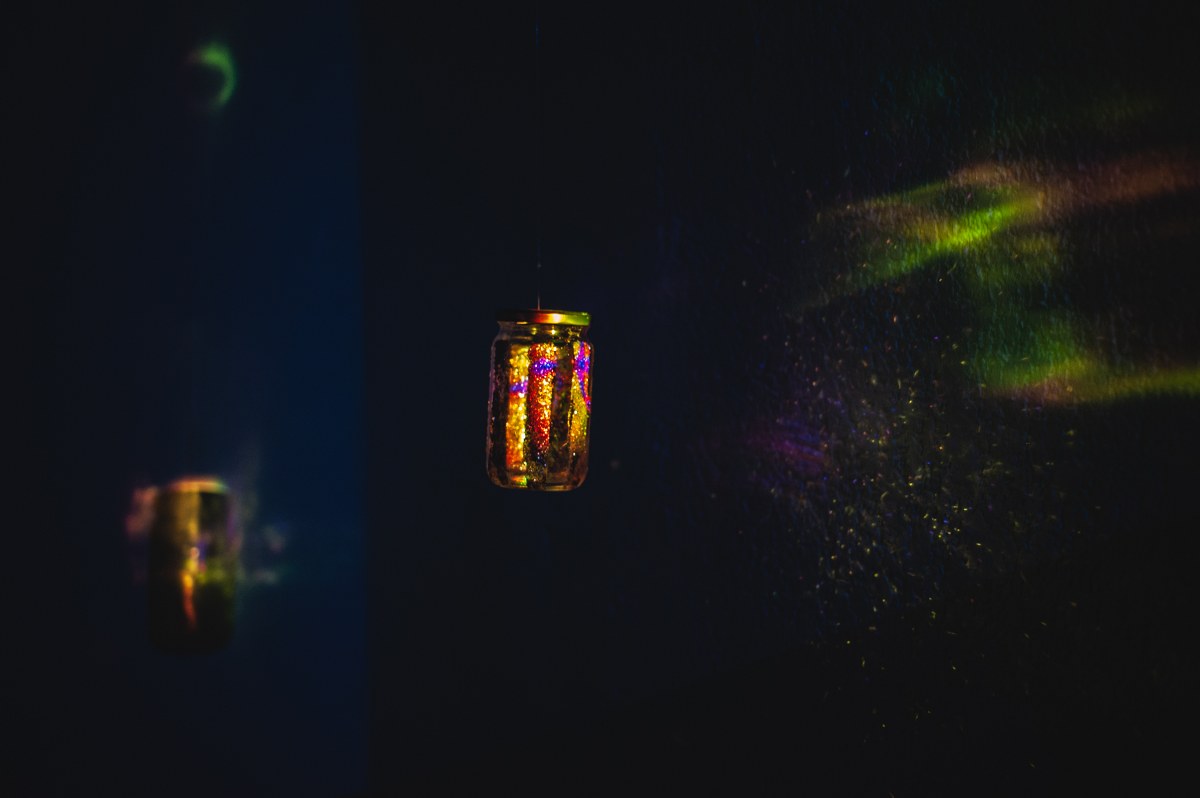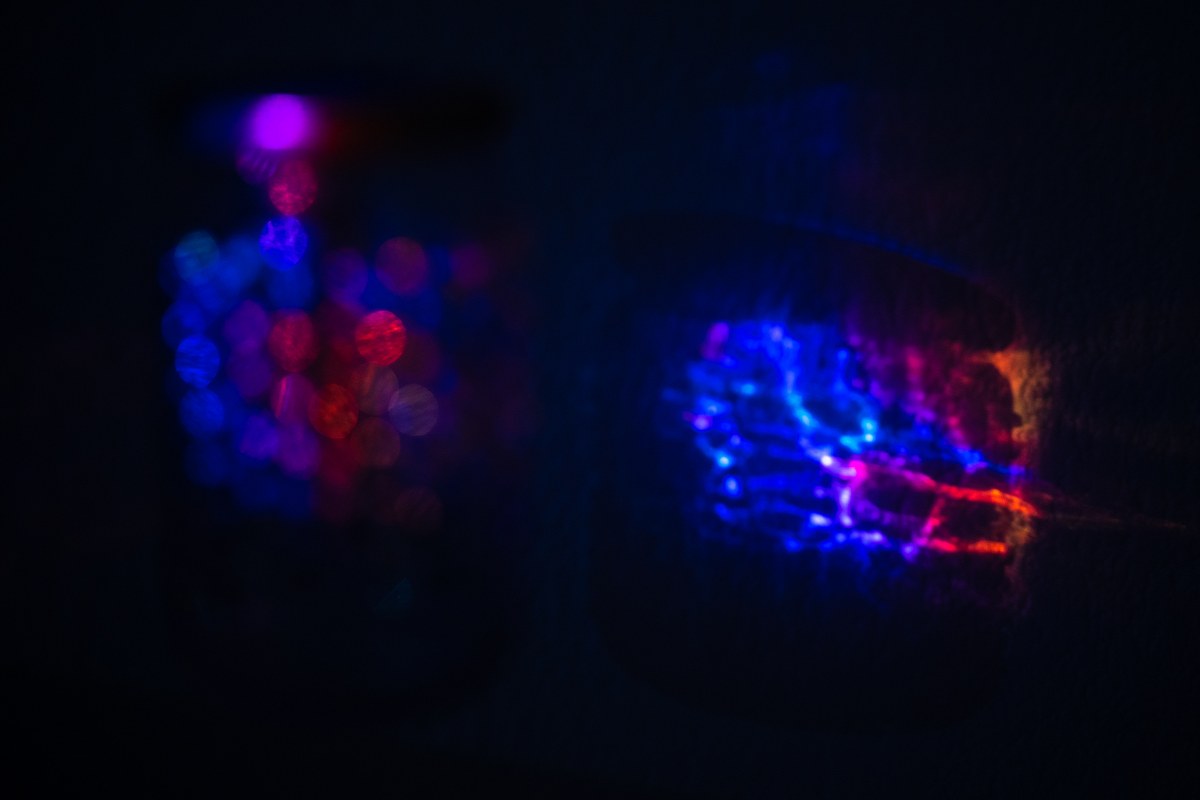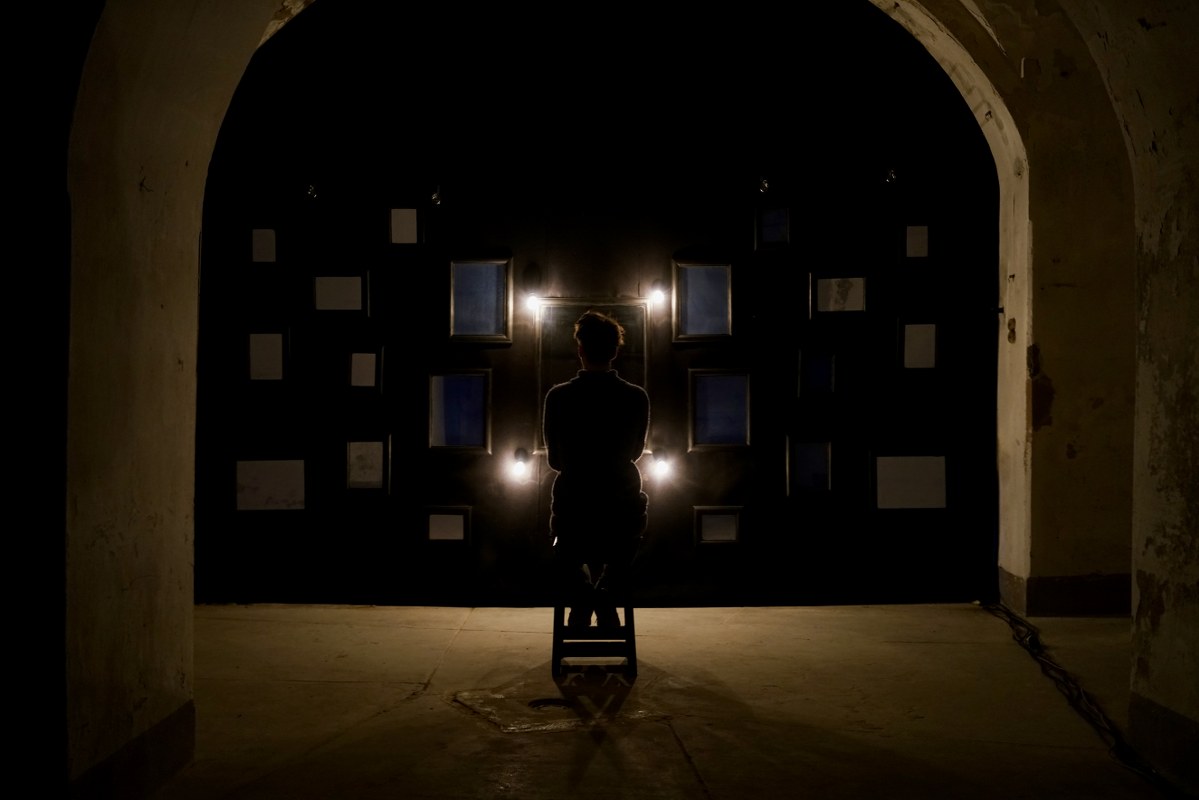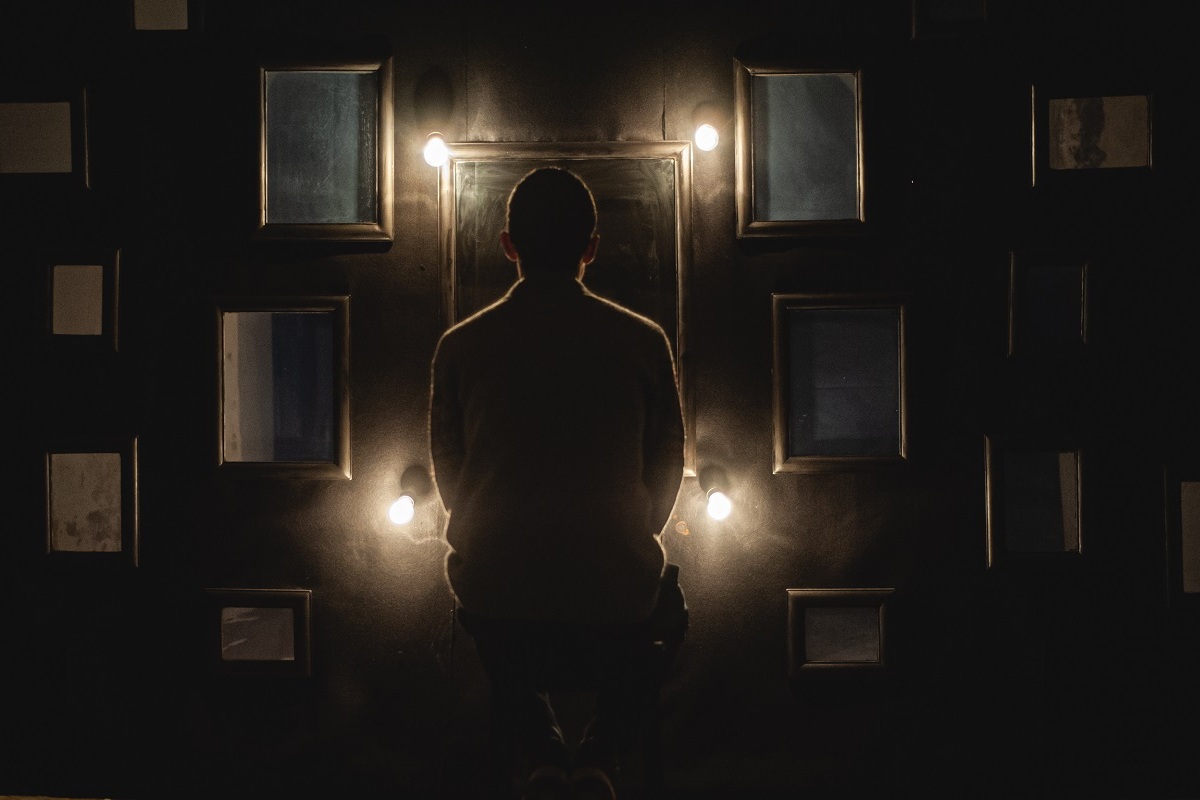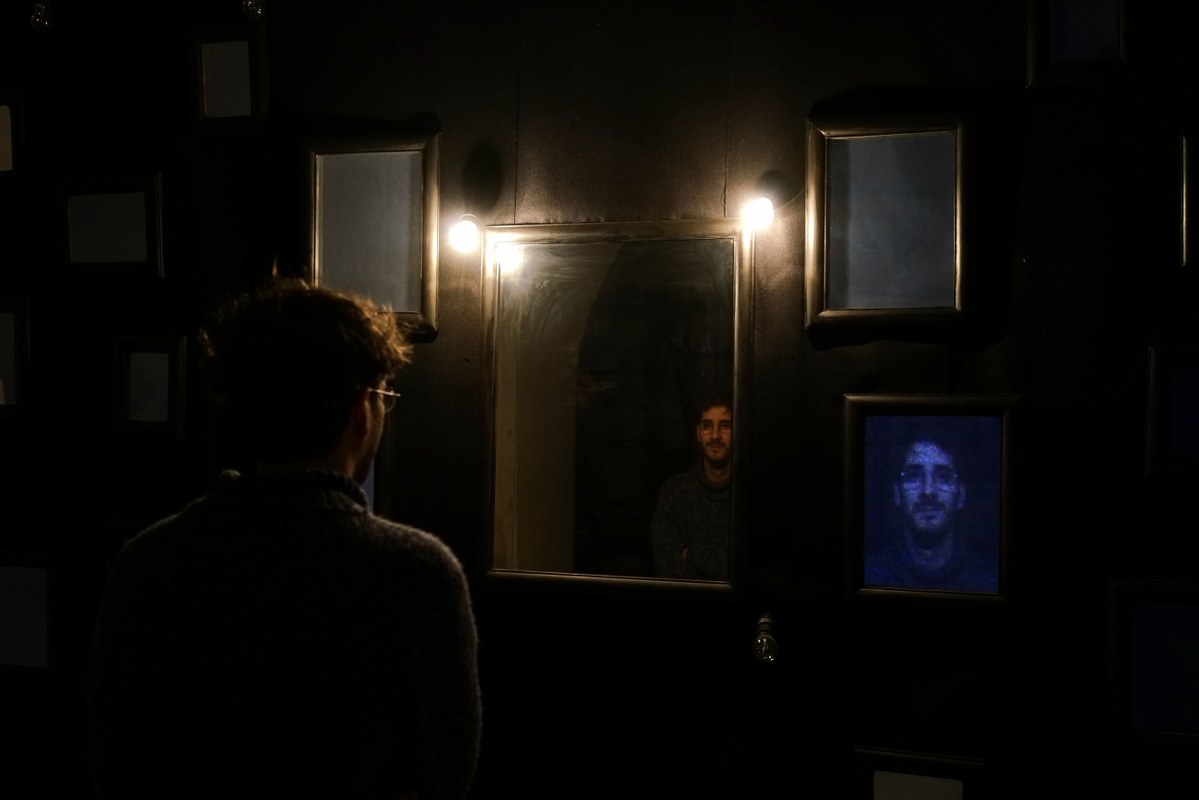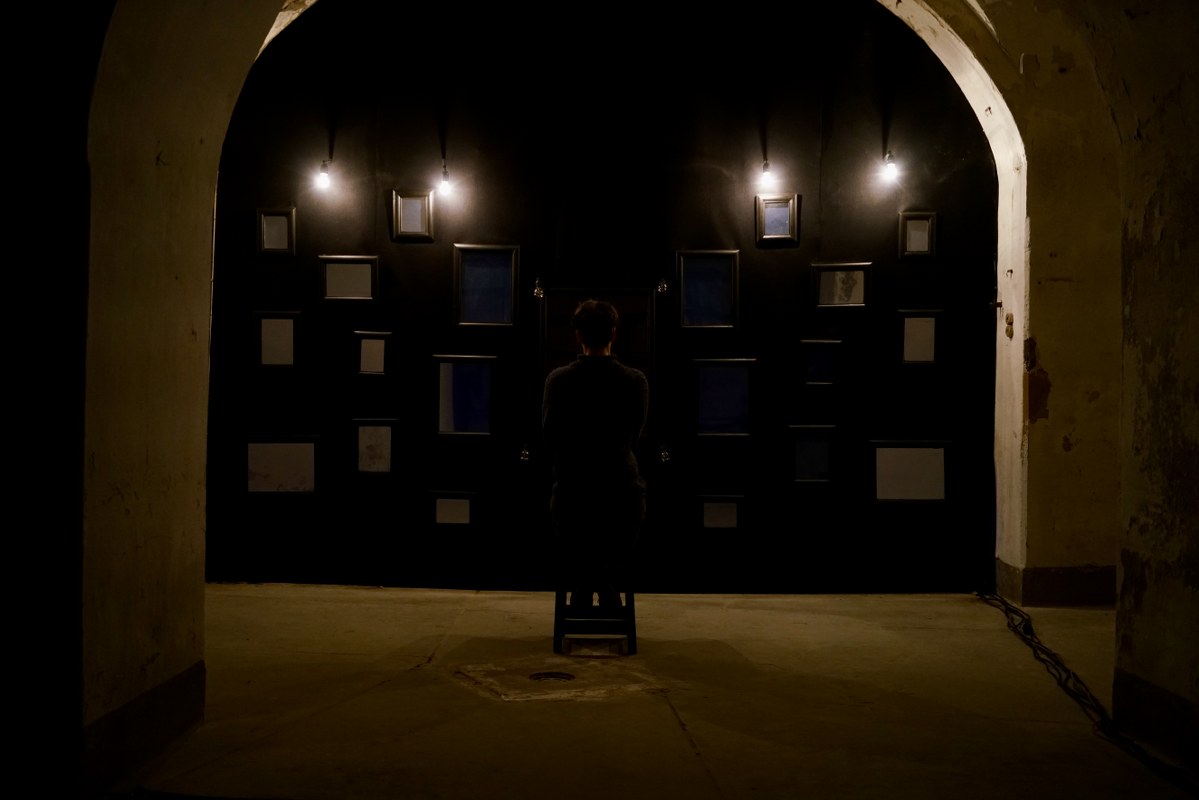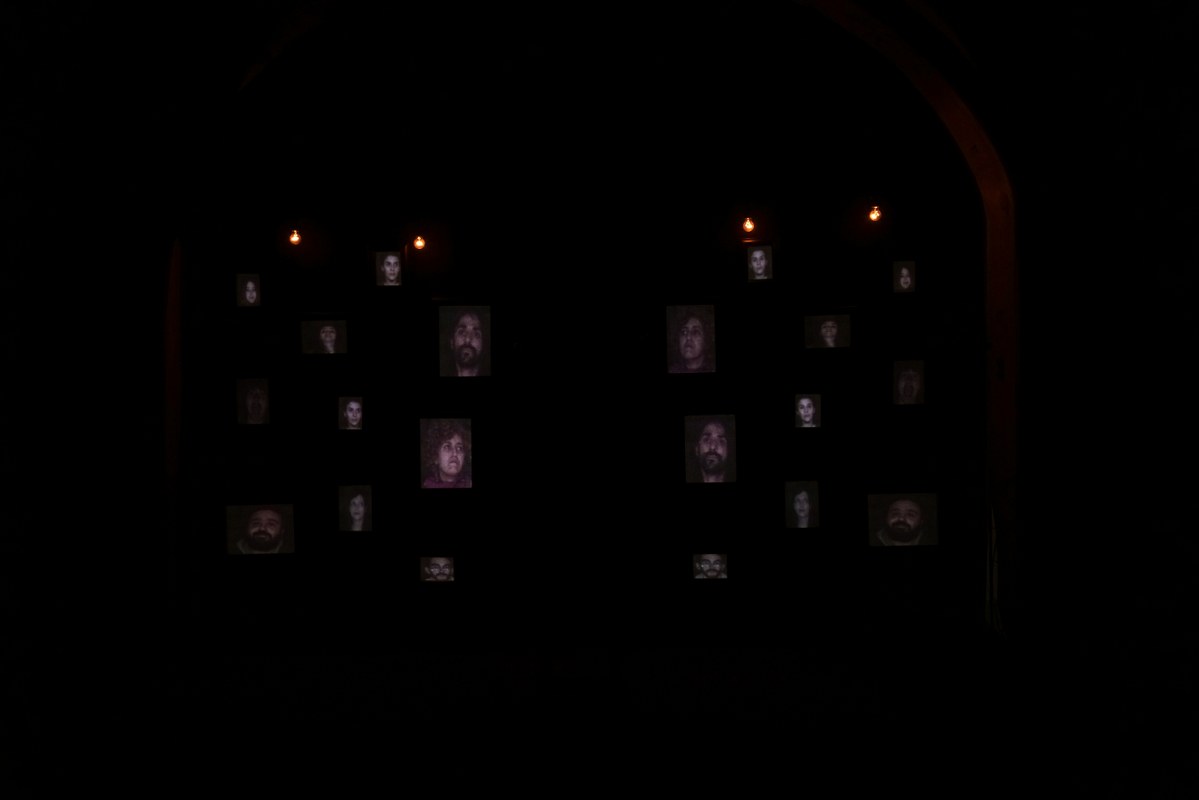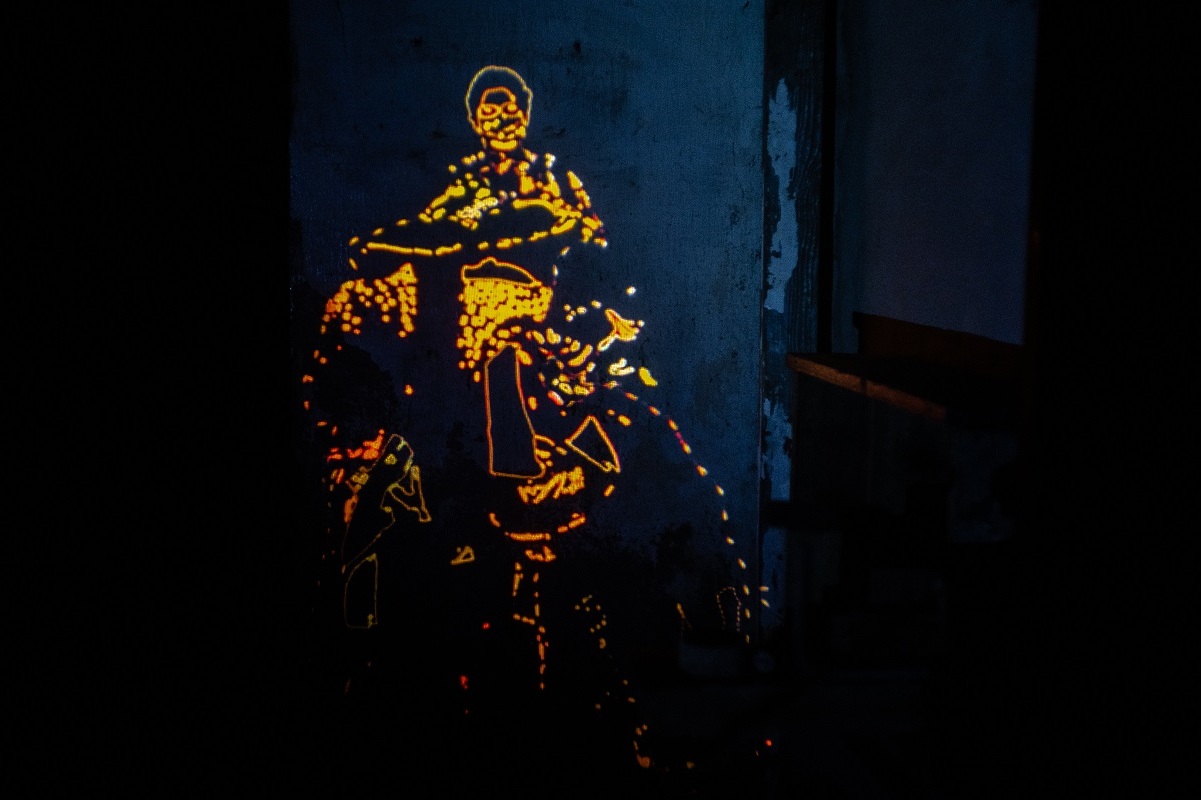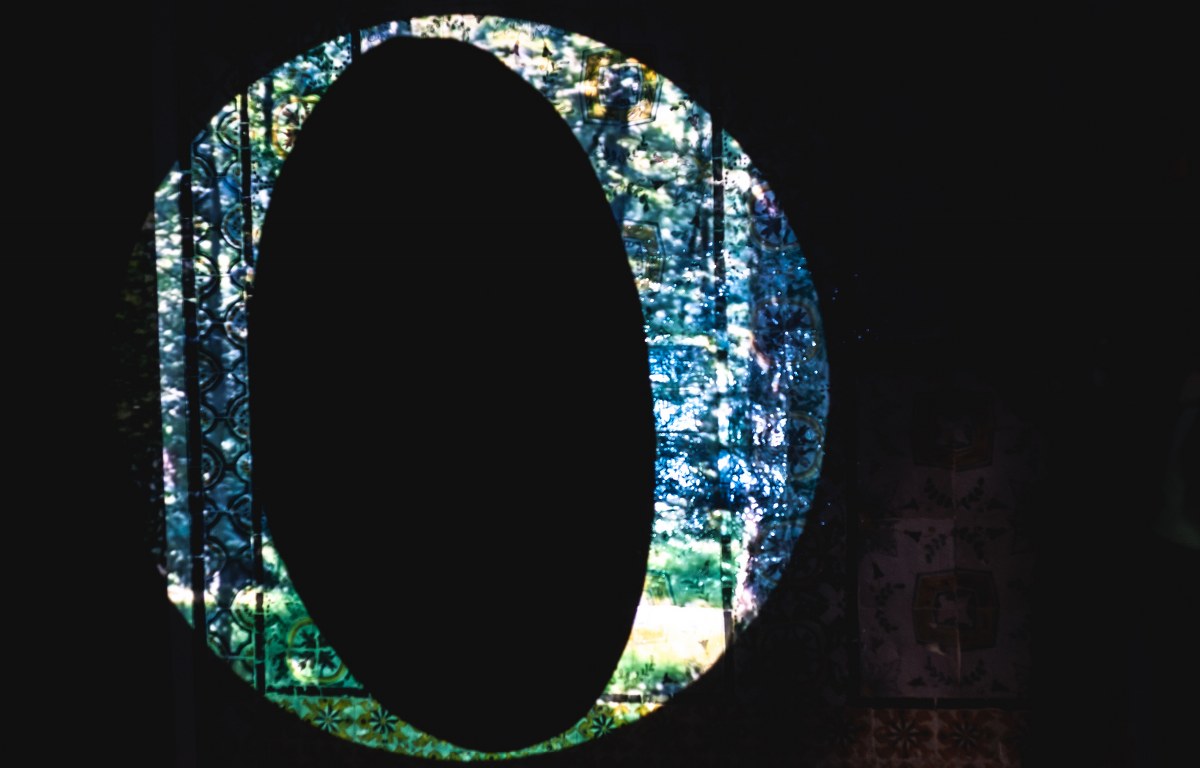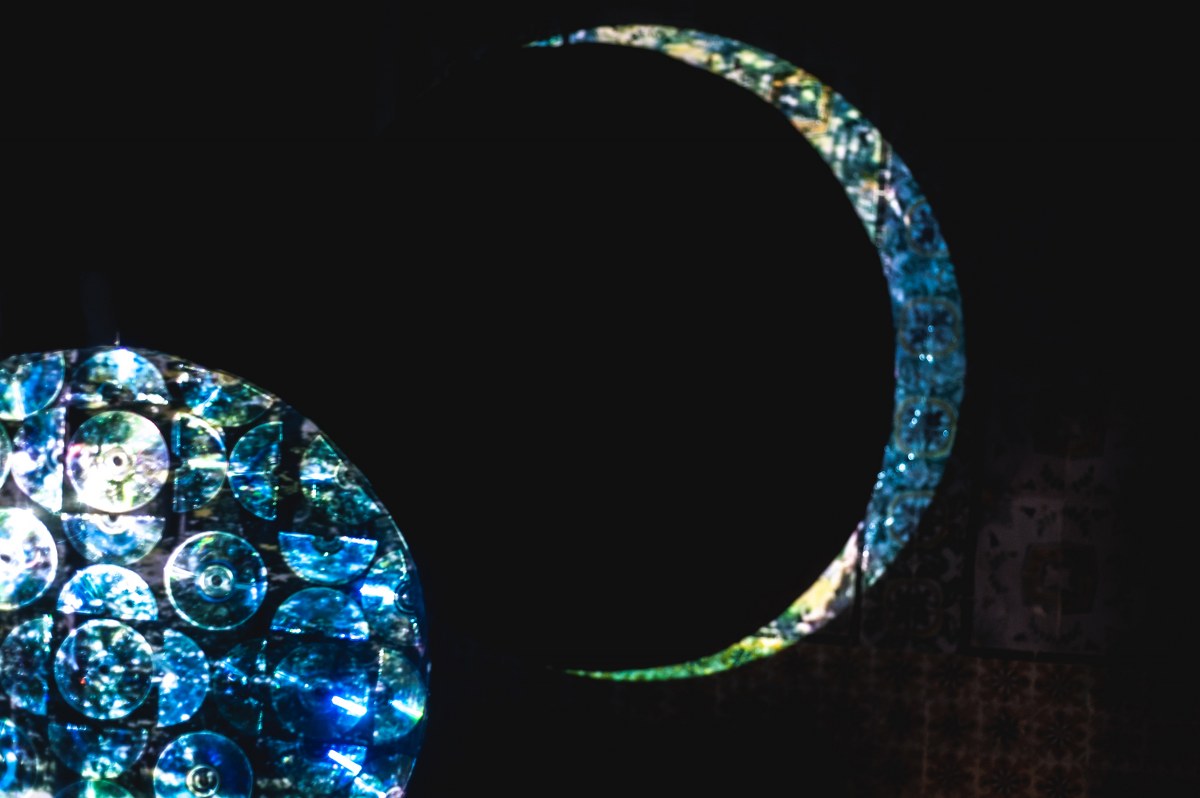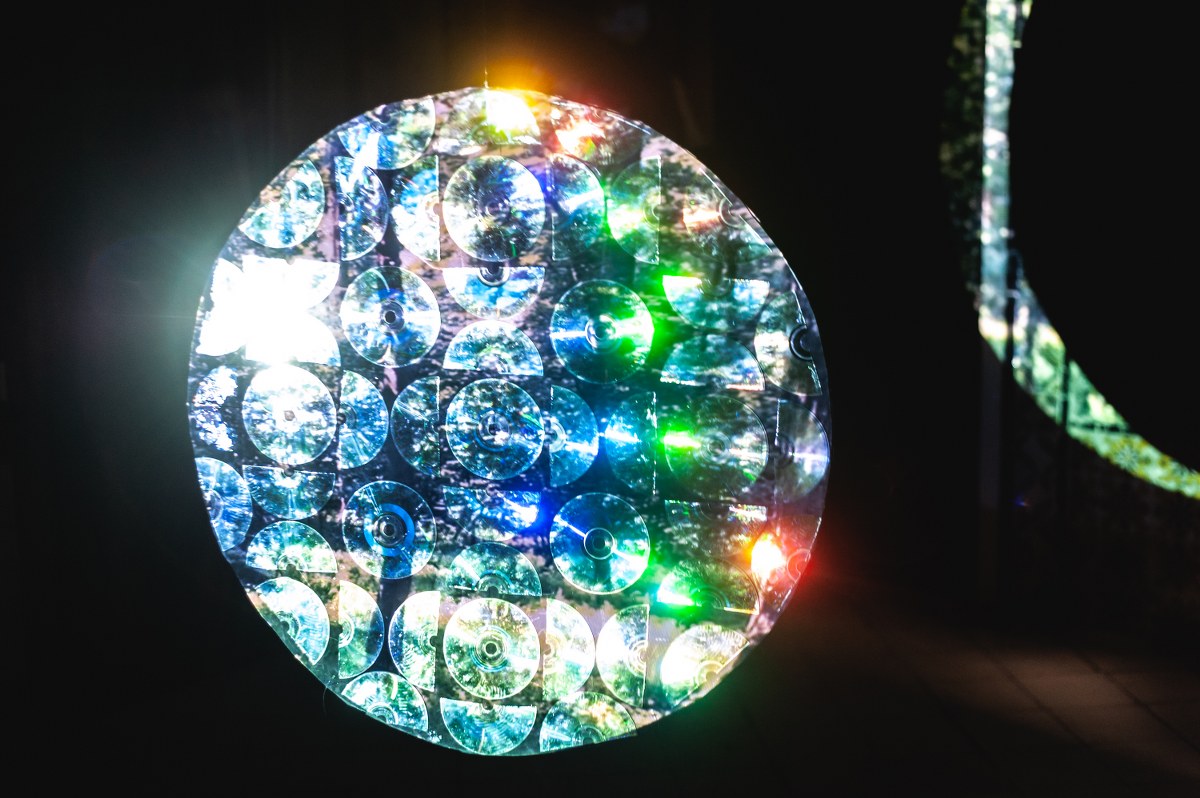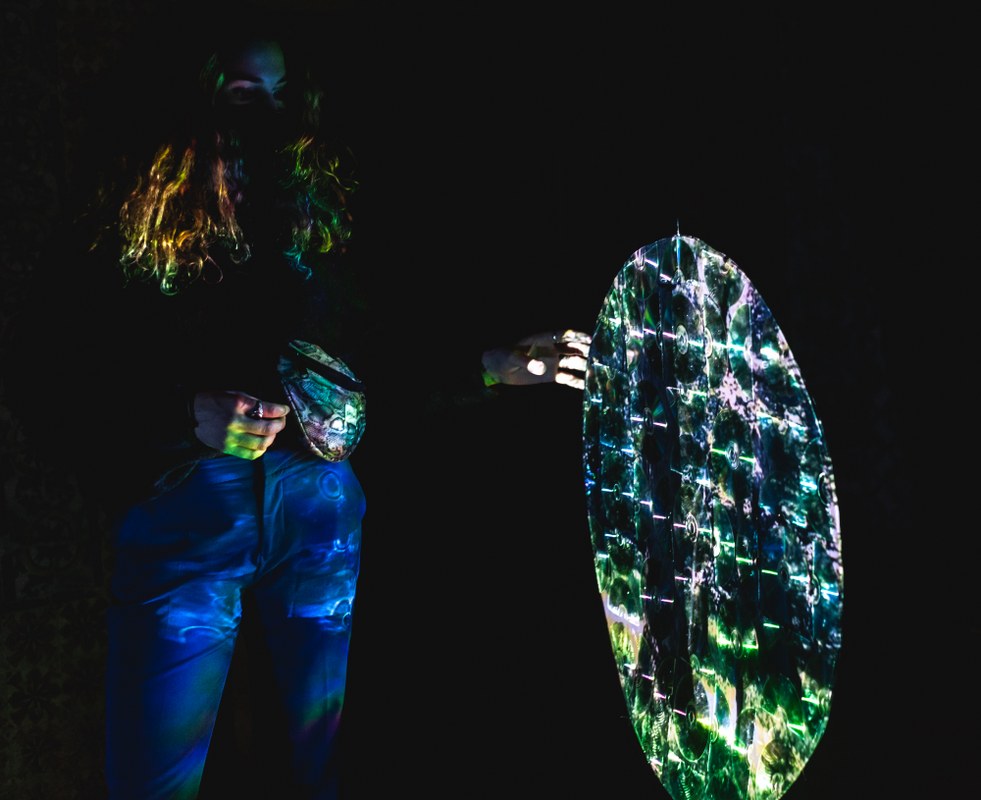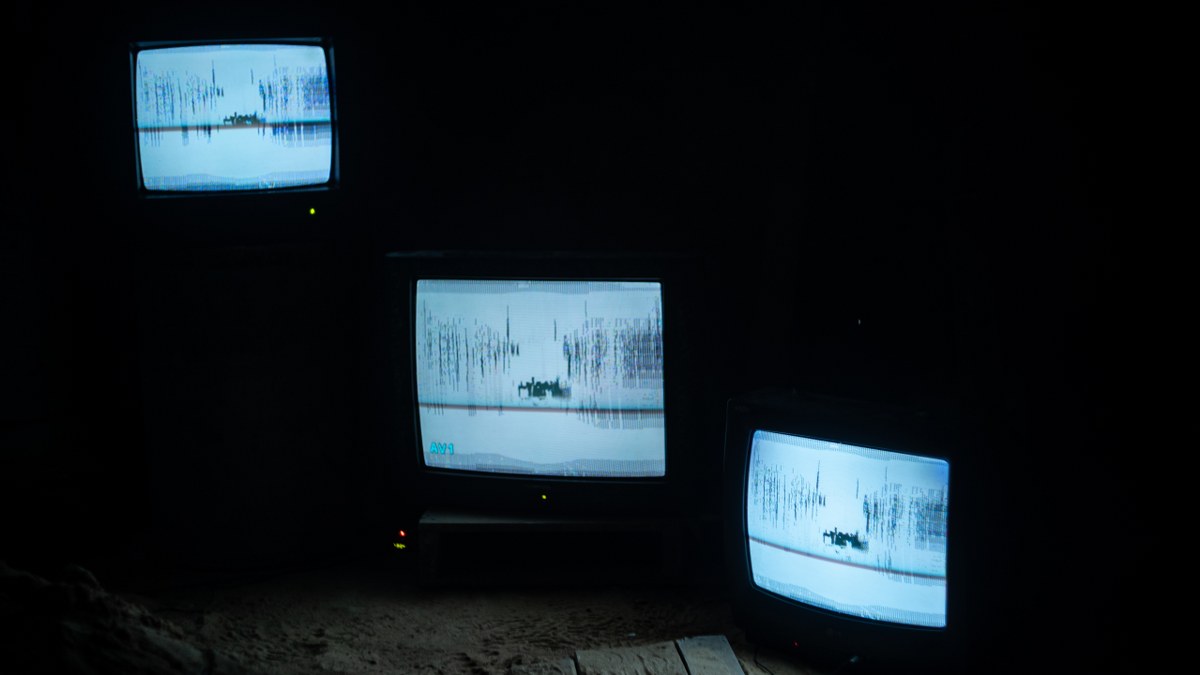Written by Bettina Pelz. Published on 21 September 2021.
During the pandemic, in March 2021, ten young artists realized public art projects in the Medina of Tunis. Yassin Aguerbi, Zied Belaifa, Mohamed Gharbi, Mariem Hidri, Zeineb Kaabi, Rima Khraief, Bastien Lagier, Omeyma Medini, Haifa Ouerfelli, and Becem Sidri presented new works in a decentral exhibition project. Their installations and interventions are based on drawing, painting, photography, or digital media, but they all have in common to work with light as artistic material.
An immersive environment, made of UV light, fluorescent colors, and daily materials.
Photos: Nour El Houda Ghanem, Rayen Touati
A composition of analog and digital collages projected in space.
Photos: El Juan, Zied Belaifa, Rayen Touati
An intervention, working with digital animation projected in a public passage.
Photos: El Juan, Nour El Houda Ghanem, Rayen Touati
Digital animation projected into a mirror cube.
Photos: Nour El Houda Ghanem, Zied Belaifa
A dialogic installation of drawings on overhead projectors.
Photos: Zied Belaifa
A spatial installation consisting of glass and other reflective materials as a set for video projections.
Photos: Zied Belaifa, Rayen Touati
A responsive installation, made of screens functioning as multiplied mirrors.
Photos: Bastien Lagier, Rayen Touati
Video documentation of a performance situated in a weaving workshop.
Photo: Zied Belaifa
A spatial intervention, made of CDs on a freely hanging disc and video projections.
Photos: Rayen Touati
A multi-channel video installation, shown on outdated TVs.
Photos: Zied Belaifa
Due to the public health restrictions, the public display had been shifted more than once, and when in place health and security measures shaped the exhibition situation.
The audience was very enthusiastic, partly because of an art event happening during the time of the pandemic, partly because of the artwork on display, and partly because there were only artists based in Tunisia who were on display. What seemed to be a constraint, turned out to be an experience for the audience to understand the qualities of local artists. The surprise about the range of artistic approaches and the quality of works – from general audience to art professionals – generated a moment of empowerment, pride, and identification with the Tunisian artistic potential. Within the excitement, reoccurring questions were if these artists are still living in Tunisia or if they already left – following the general assumption that the good artists had to leave for Europe or North America.
Embedded in the INTERFERENCE community, the YOUNG MASTERS PROGRAM was developed in 2019 as a framework for artists, curators, and art mediators to engage in creating new art displays in Tunisia. Since there is only a very small number of white-cube museums, exhibition spaces, galleries, and since working in public spaces, cultural heritage environments, or any other local frameworks are not yet part of the curriculum of the art and design academies, emerging artists show very vivid interest to find a supportive set that accompanies artists on working in public space.
Following the Tunisian Revolution in 2011, the streets and squares of the country have increasingly become a space for expression and communication, from established festivals to transient performances. Despite the climate of uncertainty that affected the country over the last 10 years, there are many initiatives and projects associated with art, design, and architecture that emerged and reclaimed space for expression and discussion. The INTERFERENCE project is one of them. Founded in 2016, it is a biennial light and media art project, located in the Medina of Tunis. Key Features are site-specific interventions and installations for selected sites throughout the Medina.
INTERFERENCE is an artists- and curators-driven initiative featuring light and media art projects, directed by Aymen Gharbi and Bettina Pelz. They have been realizing exhibition programs in the Medina of Tunis (2016/2018), in the Medina of Sousse (2020), and the city of Houmt Souk on the island Djerba (2017/2019). These projects rendered visible the lack of experience and the need for specific support for young artists that wish to engage with public space, civil society, and natural or cultural challenges. Supported by the GOETHE-INSTITUT Tunis, a program was developed that links young artists and curators in a framework of training combined with peer-review, mentoring, onsite experimentation, and public display.
When in 2020, due to the spread of the Coronavirus pandemic, all public activities were suspended, the INTERFERENCE community started to discuss what still could take place within the new limitations. The YOUNG MASTERS PROGRAM was one of the activities redesigned. The YOUNG MASTERS PROGRAM became a hybrid program, with larger gatherings online, and small groups as well as tandems working online and in-person when possible.
The participating curators were Sara Mari Blom, Imen Cherif, Hela Doghri, Amin Gharbi, Khawla Hammami, Ons Kammoun, Salma Kossemtini. Some of them were already experienced in the INTERFERENCE framework, for some, it was a new setting. Along with the work with the artists they cared for communication onsite and online, art mediation, and documentation of the project. In addition to the collective workshops, there was dedicated training to assist the young curators to manage their tasks.
Despite the health restrictions, a new feature was added what was a ‘Masterclass’ headed by experienced artists like Malek Gnaoui, Hela Jebbi, Mouna Jemal Siala, and Wadi Mhiri. They generously shared their knowledge and paved the way for concepts to be improved and works to be advanced. Due to the uncertainties of public activities, the program happened over a period of six months, while it was planned for three months. The extended timeframe worked in favor of the quality of processing as well as of the result. All the efforts worked out and resulted in a public art program that amazed the audience as well as artists, curators, and art mediators.



